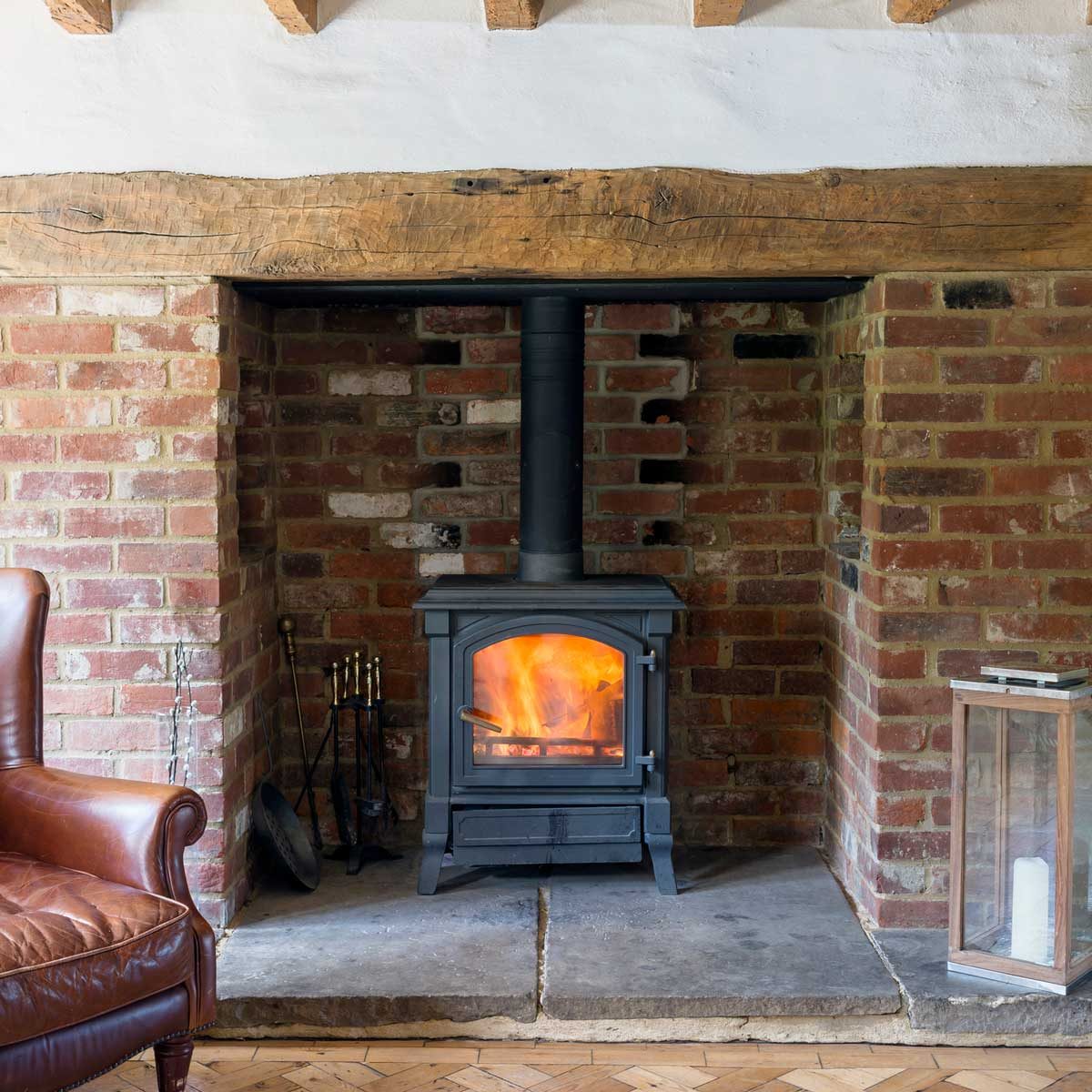Like the idea of heating your home with wood? Wood burning stoves can be a beautiful thing. Learn what they are and exactly how they work.

Is a Wood Burning Stove Right for Your Home?

With an estimated 10.1 million wood burning stoves in American homes, the U.S. Environmental Protection Agency (EPA) has released new guidelines to regulate this large and stable industry. All new wood burning stoves must release no more than 4.5 grams of smoke per hour to minimize greenhouse gas effects during winter. This number is expected to drop by 50 percent within the next year or so.
Modern stove designs are full of innovations that help them meet this stringent new environmental standard. If you think you’d like to try heating with wood, a wood burning stove is certainly worth considering. Learn all about wood burning stoves and how they work, as well as the best firewood for heating, then decide for yourself if one makes sense as a heat source for your home.
If you decide they’re not for you but still like the idea of burning wood, consider having a fireplace or masonry heater built in your home. Or for a more refined wood burning experience, invest in a hardwood pellet burning stove.
On This Page
What Is a Wood Burning Stove?
Wood burning stoves are self-contained heating appliances designed to produce indoor heat through wood combustion. Many sizes and styles exist, but the basic principles are always the same.
A wood fire is contained in the body of the stove, which is usually made of steel or cast iron. The fire warms the body of the stove, which radiates heat into the surrounding space. Smoke from the fire leaves the building through a pipe (called the flue) that leads to a chimney.
How Does a Wood Burning Stove Work?
All wood burning stoves rely on constant air flow to create combustion and heat. Fresh air is drawn in through adjustable dampers, usually in the stove’s door. This air allows wood inside the stove to burn, because combustion can’t happen without oxygen. Exhaust gases from the fire are then drawn up the chimney, safely leaving the building.
Most modern wood stoves are lined with fire brick to protect their metal bodies from overheating. Many also have specially shaped pieces of sheet steel, called baffles, inside their firebox. The baffles are designed to control and slow the escape of gases through the chimney, retaining warmth longer and improving overall efficiency.
In addition to the adjustable air vents in the front of most stoves, many are also equipped with turn dampers in the indoor portion of the flue pipe that leads to the chimney. Turn dampers are circular discs of metal attached to handles protruding from the pipe. They’re slightly smaller in diameter than the inside of the stovepipe, and they are rotatable. This rotation lets the user slow down or speed up the departure of exhaust gases from the building, allowing more or less heat to be retained.
Is a Wood Burning Stove a Good Heat Source for Your Home?
It depends. Wood burning stoves aren’t for everyone. If you prefer low to no maintenance heating options where the only homeowner involvement is setting the thermostat and paying your monthly bill, burning wood probably isn’t for you.
If, on the other hand, you like a traditional heating approach that involves some physical work (cutting, splitting and stacking wood), owning a wood stove can be a beautiful thing. Old timers near where I live say that firewood you produce yourself rather than buy warms you three times: Once when you cut and split it, once when you stack it and once more when you burn it.
However, if your home is large with many closed-off rooms, wood heat isn’t the best choice. That’s because wood stoves lack ducts to move warm air around the home. Generally speaking, wood burning stoves suit small to medium-size, open-concept houses best.
What to Burn in a Wood Burning Stove
There’s more to proper wood stove use then filling it with wood and stepping away. The species and moisture content of your firewood affect your stove’s performance in a big way.
All firewood should be stacked in a well-ventilated area for at least a few months after cutting and splitting before you try to burn it. This gives the wood a chance to dry, and makes combustion much cleaner and more efficient.
Hardwoods like oak, maple, birch and ash provide the most heat, so if you live somewhere with seriously cold winters stock up on this sort of wood. Softwoods like pine and fir don’t provide as much heat or burn as cleanly because of naturally occurring oils in the fibers, but some folks find them ideal for fall and spring burning when it’s not cold enough to warrant a hardwood fire.
How To Clean and Maintain a Wood Burning Stove
Three parts of your wood burning stove system need regular cleaning.
Firebox: This is the main chamber inside your wood burning stove where the fire is contained. It will need to have the ash removed regularly — once a week or more, depending on the size of your stove.
Flue Pipe: The indoor pipe leading from your stove to the chimney will gradually build up ash, and possibly a little creosote if you do some burning with the air intake dampers mostly closed. You’ll need to remove this pipe and clean it outdoors with a chimney brush every month or two.
Chimney: Most chimneys have a bottom access port for cleaning. Use your stovepipe cleaning brush with chimney rod attachments to scrape loose any ash buildup inside the chimney pipe. Do this a few times each winter.
In addition to these cleaning tasks, remove ash and soot from the inside face of your stove door regularly.




















